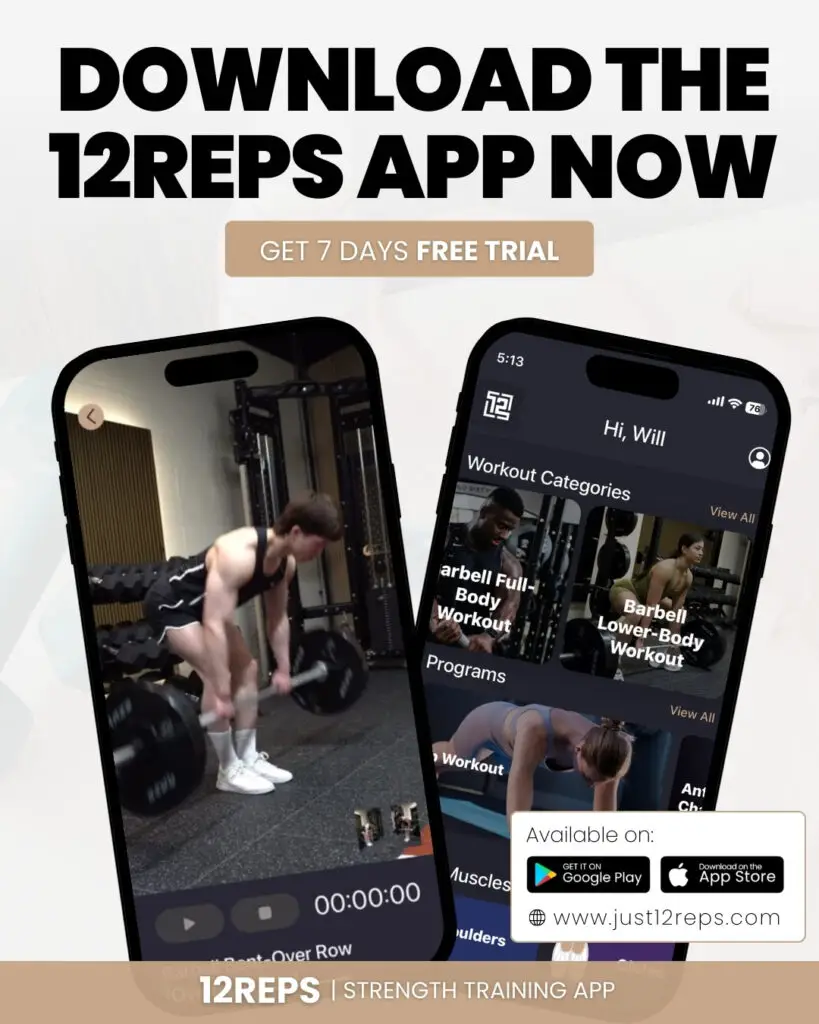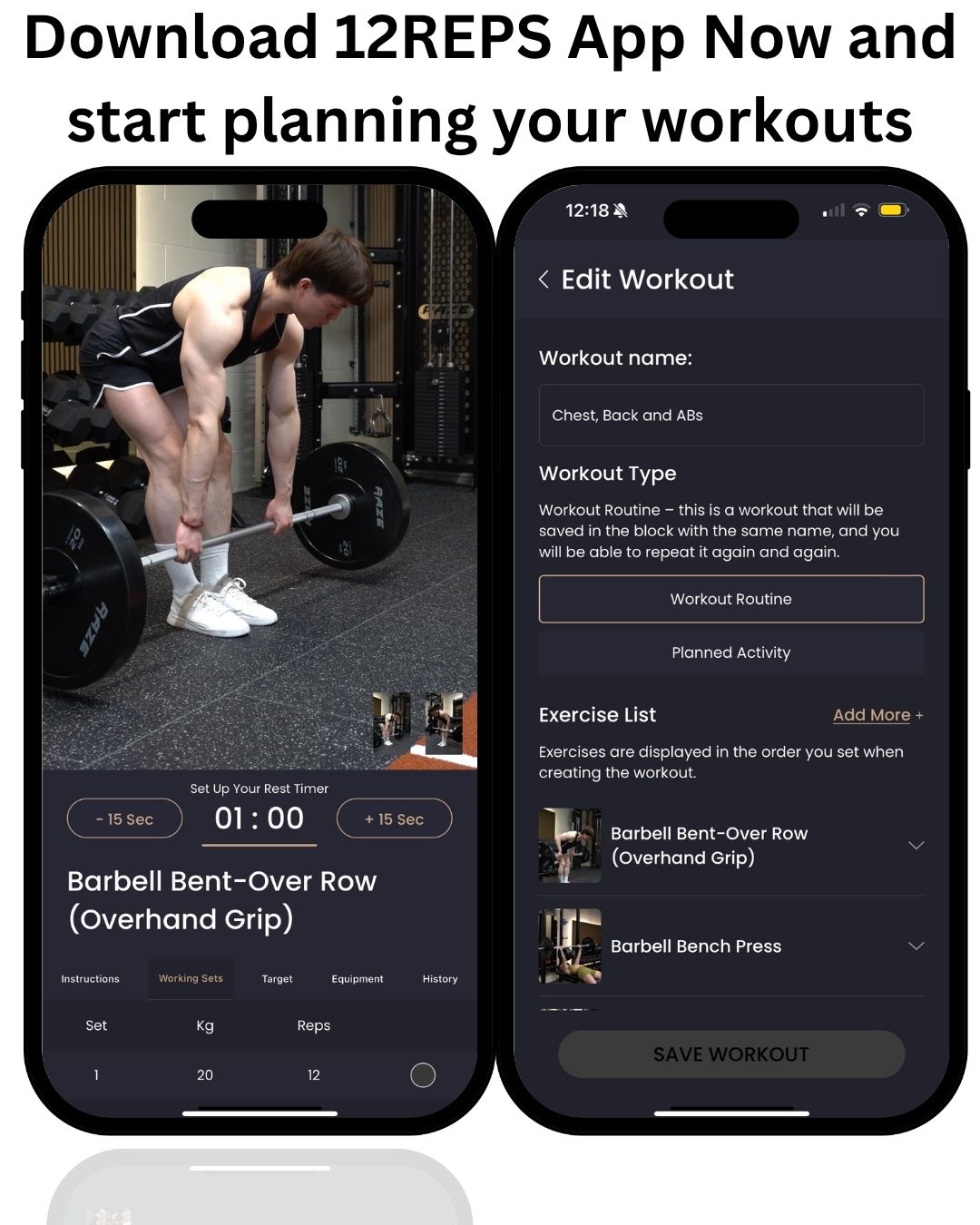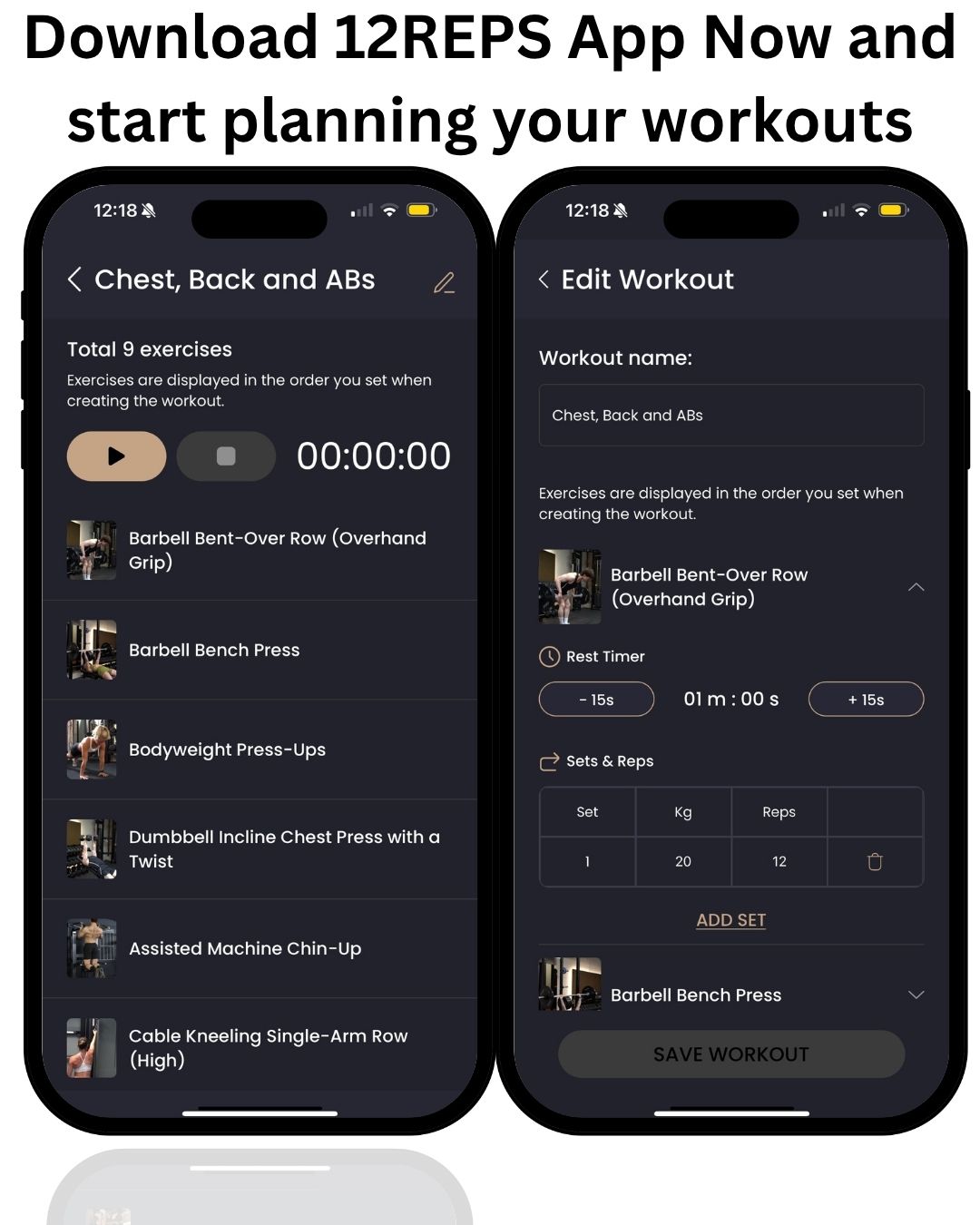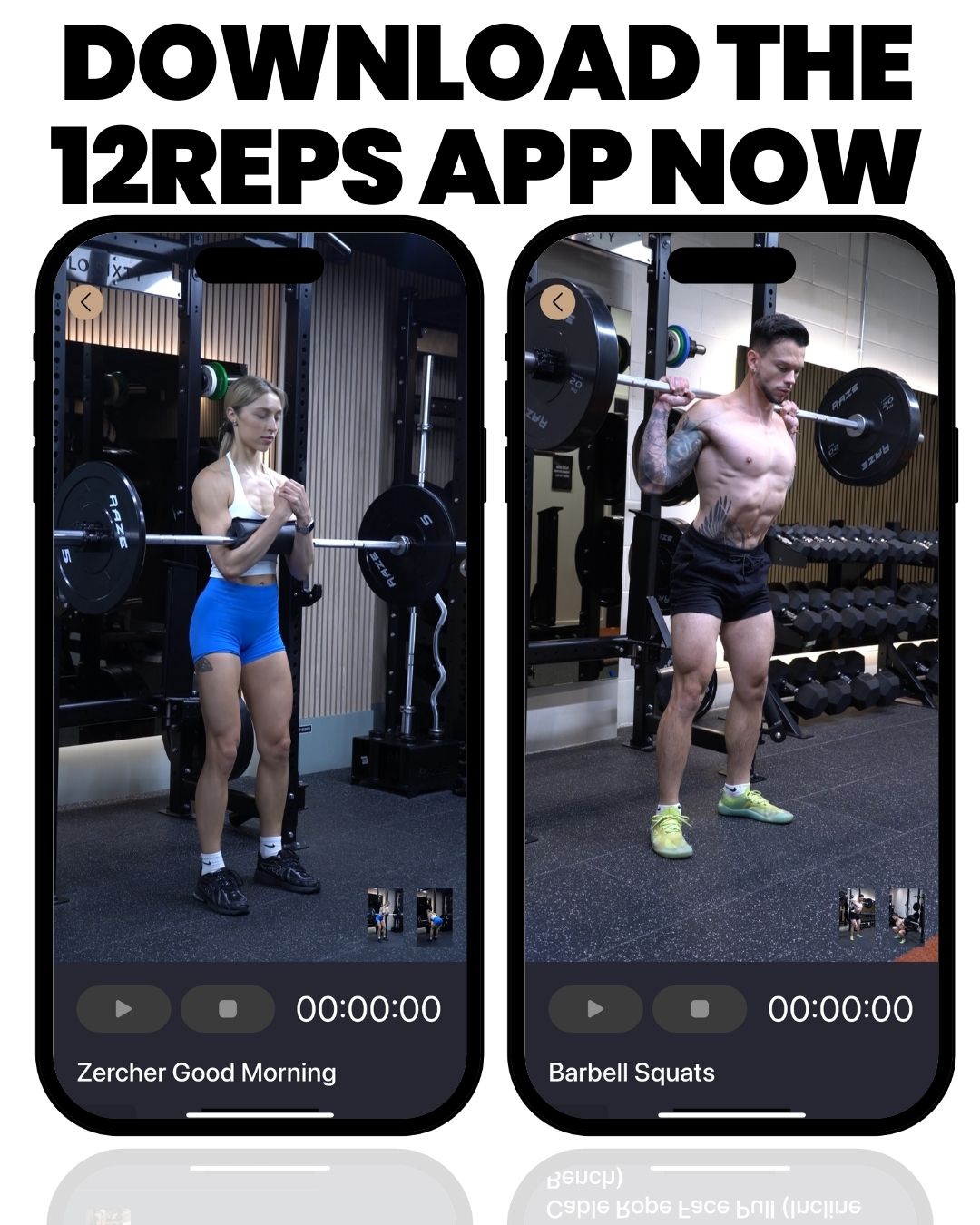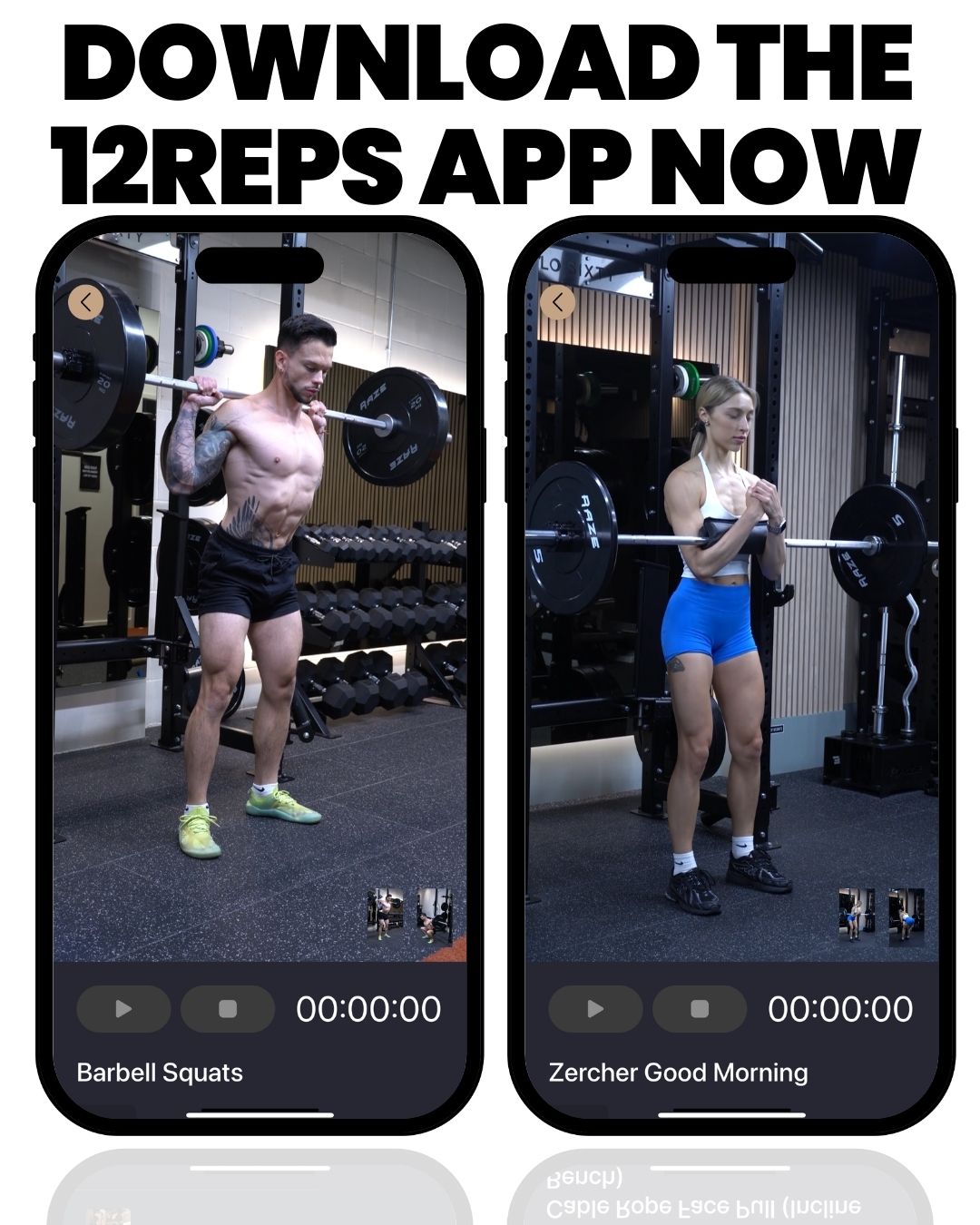After a decade of helping clients transform their physiques in commercial gyms, home setups, and everything in between, I’ve learned that building an impressive back doesn’t require a warehouse full of equipment. What it requires is intelligent exercise selection, progressive overload, and consistency. Today, I want to share with you one of my most effective pull-back sessions from the 12REPS app – a workout that has helped countless clients develop strength, muscle mass, and confidence, regardless of their training environment.
The beauty of a well-designed pull-back session lies in its ability to target multiple muscle groups while addressing the postural imbalances that plague our modern, desk-bound society. Through my years of experience, I’ve witnessed firsthand how a strategic approach to back training can not only build impressive muscle mass but also alleviate chronic pain, improve posture, and enhance overall quality of life.
In this comprehensive guide, I’ll walk you through four cornerstone exercises that form the backbone of effective pull training: the barbell bent-over row, kettlebell gorilla row, dumbbell reverse flys, and lat pull-down. Each exercise has been carefully selected based on its ability to deliver maximum results with minimal equipment requirements, making this session accessible whether you’re training in a fully equipped gym or a modest home setup.

The Science Behind Effective Back Training
Understanding the anatomy of the back is crucial for maximising your training results. The back comprises several major muscle groups, including the latissimus dorsi, rhomboids, middle and lower trapezius, rear deltoids, and the often-overlooked erector spinae. Each of these muscles plays a vital role in both aesthetic development and functional movement patterns.
Through my extensive work with clients ranging from complete beginners to competitive athletes, I’ve observed that the most successful back development programs incorporate both horizontal and vertical pulling movements. This approach ensures comprehensive muscle activation while promoting balanced development across all planes of motion.
The pull-back session I’m sharing today addresses these requirements through a carefully orchestrated sequence of exercises. The barbell bent-over row serves as our primary horizontal pulling movement, targeting the middle trapezius, rhomboids, and latissimus dorsi while demanding significant core stability. The kettlebell gorilla row adds a unilateral component, addressing muscle imbalances while providing an intense metabolic challenge.
Our dumbbell reverse flys specifically target the often-neglected posterior deltoids and middle trapezius, muscles that are crucial for maintaining proper shoulder health and posture. Finally, the lat pull-down provides vertical pulling stimulus, emphasising latissimus dorsi development while allowing for precise load management.
The Complete Pull-Back Workout Program
Exercise 1: Barbell Bent-Over Row
The barbell bent-over row stands as the cornerstone of any effective back training program. This compound movement targets multiple muscle groups simultaneously while building functional strength that translates directly to real-world activities. In my experience working with clients, this exercise consistently delivers the most significant improvements in both muscle mass and postural strength.
Proper Form and Technique: Begin by positioning yourself with feet shoulder-width apart, holding a barbell with an overhand grip slightly wider than shoulder width. Hinge at the hips, maintaining a neutral spine while lowering your torso to approximately 45 degrees. From this position, pull the barbell toward your lower chest, focusing on squeezing your shoulder blades together at the top of the movement. Control the weight back to the starting position, maintaining tension throughout the entire range of motion.
Exercise 2: Kettlebell Gorilla Row
The kettlebell gorilla row has become one of my favourite exercises for developing unilateral strength while addressing muscle imbalances. This movement pattern closely mimics real-world lifting scenarios while providing an intense cardiovascular challenge that enhances both strength and conditioning simultaneously.
Proper Form and Technique: Position two kettlebells between your feet, assuming a wide stance with toes pointed slightly outward. Hinge at the hips and grab both kettlebell handles, maintaining a neutral spine throughout the movement. Alternate rowing each kettlebell toward your hip, focusing on a powerful pull while keeping the opposite kettlebell stable on the ground. This alternating pattern creates core instability that demands additional stabilisation from your deep abdominal muscles.
Exercise 3: Dumbbell Reverse Flys
The dumbbell reverse fly specifically targets the posterior deltoids and middle trapezius, muscles that are often underdeveloped in individuals who spend significant time in forward head postures. Through my work with office professionals and athletes alike, I’ve found this exercise to be invaluable for correcting postural imbalances while building impressive rear deltoid development.
Proper Form and Technique: Begin in a bent-over position with dumbbells in each hand, arms hanging naturally toward the floor. With a slight bend in your elbows, raise the weights out to your sides until your arms are parallel to the floor. Focus on squeezing your shoulder blades together at the top of the movement, then slowly lower the weights back to the starting position. The key to success with this exercise lies in maintaining control throughout the entire range of motion while avoiding momentum.
Exercise 4: Lat Pull-Down
The lat pull-down provides an excellent vertical pulling movement that specifically targets the latissimus dorsi while allowing for precise load management. This exercise is particularly valuable for individuals who are working toward their first pull-up or those seeking to add volume to their back training without the fatigue limitations of bodyweight movements.
Proper Form and Technique: Sit at the lat pull-down machine with your thighs secured under the pads. Grab the bar with a wide, overhand grip and lean back slightly. Pull the bar down toward your upper chest, focusing on driving your elbows down and back. Squeeze your lats at the bottom of the movement before slowly returning the weight to the starting position. Avoid using momentum or leaning excessively backwards during the pulling phase.
Complete Workout Structure
| Exercise | Warm-Up Set | Working Sets | Reps | Rest Period |
| Barbell Bent-Over Row | 1 x 15 (light weight) | 5 x 10-12 | 10-12 | 90-120 seconds |
| Kettlebell Gorilla Row | 1 x 12 each side (light weight) | 5 x 10-12 each side | 10-12 | 90-120 seconds |
| Dumbbell Reverse Flys | 1 x 15 (light weight) | 5 x 10-12 | 10-12 | 60-90 seconds |
| Lat Pull-Down | 1 x 15 (light weight) | 5 x 10-12 | 10-12 | 90-120 seconds |
Note: Each exercise begins with one warm-up set using approximately 50-60% of your working weight to prepare the muscles and nervous system for the heavier loads to follow.
The Art of Progressive Overload
One of the most critical aspects of successful strength training that I emphasise with every client is the principle of progressive overload. This fundamental concept involves gradually increasing the demands placed on your muscles over time, forcing them to adapt and grow stronger. In my decade of experience, I’ve found that clients who consistently apply progressive overload principles see dramatically better results than those who simply go through the motions.
For this pull-back session, I recommend implementing a systematic approach to load progression. Each week, aim to increase the weight by 2.5-5 pounds for compound movements like the barbell bent-over row and lat pull-down. For isolation exercises such as the dumbbell reverse flys, smaller increments of 1-2.5 pounds per week are more appropriate. The kettlebell gorilla row presents a unique challenge, as kettlebells typically come in larger weight increments. In this case, focus on increasing the number of quality repetitions before progressing to the next weight.
The key to successful progressive overload lies in maintaining perfect form while gradually increasing the challenge. I’ve witnessed countless clients plateau or even regress because they prioritised weight increases over movement quality. Remember, the muscle doesn’t know how much weight is on the bar – it only responds to the tension and stimulus you provide through proper execution.
Maximising Training Intensity with Strategic Timing
One of the most underutilised tools in most training programs is the strategic use of rest periods and timing. Throughout my career, I’ve observed that clients who pay attention to their rest intervals and use timing as a tool for progression see significantly faster results than those who rest haphazardly between sets.
For this pull-back session, I recommend using a timer for all rest periods. The prescribed rest intervals – 90-120 seconds for compound movements and 60-90 seconds for isolation exercises – are specifically designed to optimise the balance between recovery and training intensity. These timeframes allow for sufficient phosphocreatine replenishment while maintaining an elevated heart rate and metabolic stress.
As you become more advanced, you can manipulate rest periods as another form of progressive overload. Gradually reducing rest times while maintaining the same weight and repetition targets increases training density and provides a new stimulus for adaptation. I often have experienced clients start with the longer rest periods and progressively work toward the shorter end of the range over a 4-6 week period.
Additionally, consider implementing tempo manipulation as an advanced technique. Controlling the eccentric (lowering) portion of each repetition for 2-3 seconds dramatically increases time under tension, leading to enhanced muscle growth and strength gains. This technique is particularly effective for the dumbbell reverse flys and lat pull-downs.
Nutrition: The Foundation of Muscle Growth
No discussion of effective training would be complete without addressing the nutritional foundation that supports muscle growth and recovery. In my experience working with clients across various demographics and goals, protein intake remains the most critical nutritional factor for maximising the results of your back training efforts.
For individuals engaged in regular strength training, I recommend consuming 0.8-1.2 grams of protein per pound of body weight daily. This range ensures adequate amino acid availability for muscle protein synthesis while accounting for individual variations in metabolism and training intensity. Quality protein sources should be distributed throughout the day, with particular emphasis on consuming 25-40 grams of high-quality protein within 2 hours post-workout.
The timing of protein intake, while less critical than total daily consumption, can still influence your results. I encourage clients to consume a protein-rich meal or supplement within the post-workout window to maximise muscle protein synthesis rates. This practice becomes particularly important when training in a fasted state or when there are extended periods between meals.
Beyond protein, don’t neglect the importance of adequate carbohydrate intake for supporting training intensity and recovery. Carbohydrates serve as the primary fuel source for high-intensity exercise and play a crucial role in replenishing muscle glycogen stores post-workout. Aim for 2-3 grams of carbohydrates per pound of body weight on training days, adjusting based on your individual response and body composition goals.
These last two videos are not products of 12reps; copyright does not belong to us.
Leveraging Technology: The 12REPS App Advantage
In today’s digital age, technology can serve as a powerful ally in your fitness journey. The 12REPS app represents a significant advancement in personalised strength training, offering features that address many of the common obstacles I’ve encountered with clients over the years.
What sets the 12REPS app apart is its ability to create truly personalised workout plans based on your individual goals, available equipment, and time constraints. This level of customisation ensures that every workout is optimally designed for your specific situation, eliminating the guesswork that often leads to suboptimal results.
The app’s comprehensive exercise video library provides detailed demonstrations of proper form and technique, addressing one of the most significant barriers to effective training – knowing how to perform exercises correctly. Each exercise in this pull-back session is accompanied by high-quality video content that breaks down the movement patterns, common mistakes, and progression strategies.
For those serious about tracking their progress and optimising their results, I highly recommend downloading the 12REPS app and exploring the wealth of resources available. 12reps to learn more about how this innovative platform can transform your approach to strength training and help you achieve your fitness goals more efficiently than ever before.
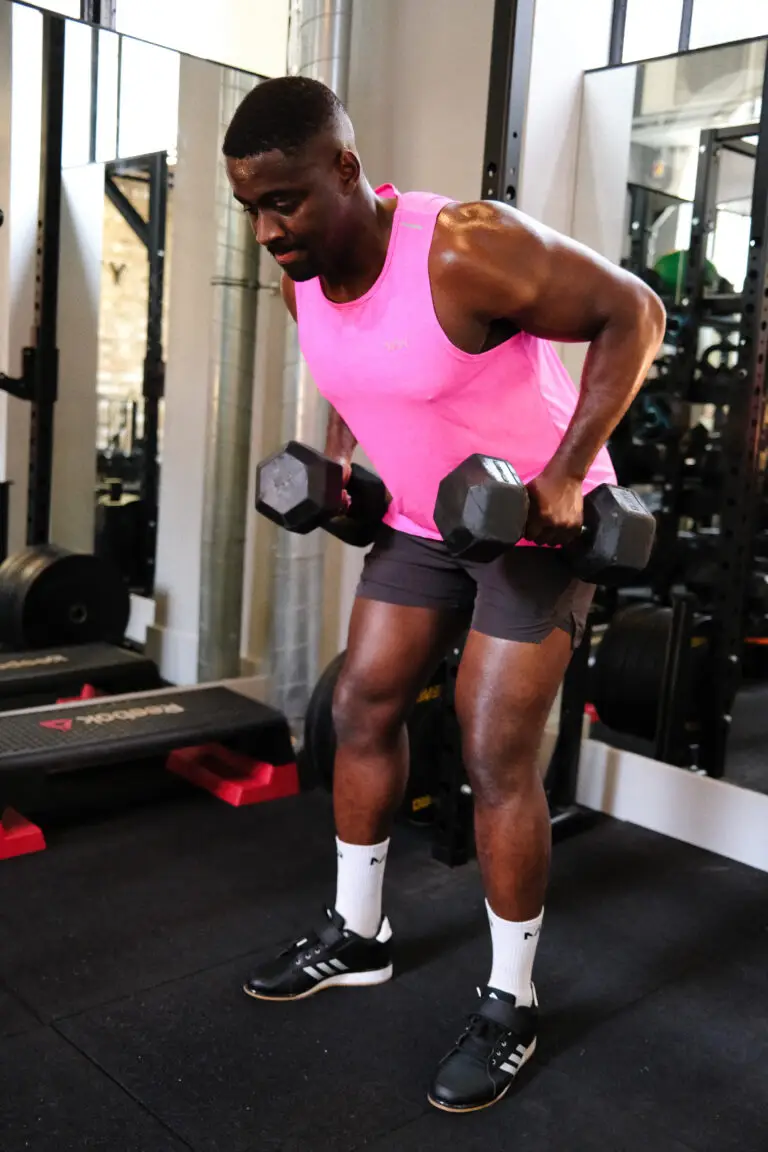
Conclusion
Building an impressive and functional back doesn’t require access to every piece of equipment in the gym. What it requires is intelligent exercise selection, consistent progressive overload, proper nutrition, and the dedication to execute your plan with precision and intensity. This pull-back session represents years of refinement and real-world application with hundreds of clients, each contributing to the evolution of this highly effective training protocol.
Remember that consistency trumps perfection every time. Focus on executing each repetition with intention, gradually increasing the challenge over time, and supporting your efforts with adequate nutrition and recovery. The combination of these elements, enhanced by the technological advantages offered by the 12REPS app, provides everything you need to build the strong, functional back you’ve always wanted.
Your journey to a stronger, more impressive back starts with your next workout. Make it count.
